Beautiful Otago Harbour
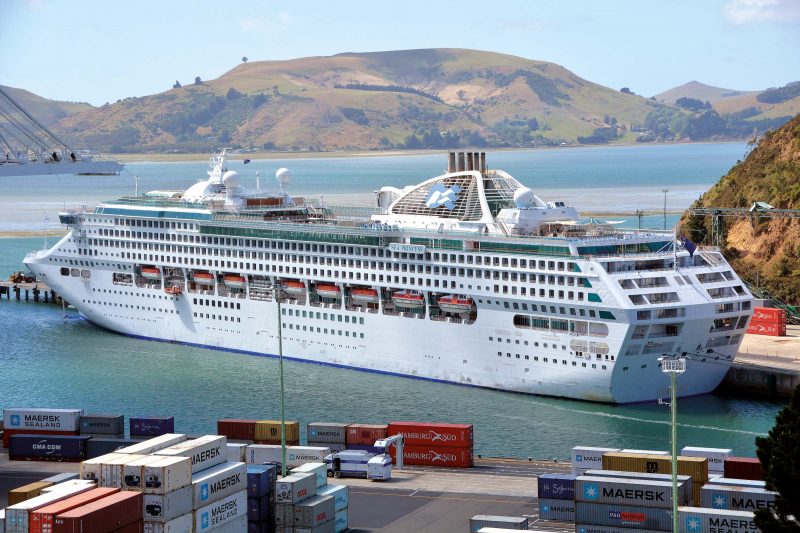
Otago Harbour is without doubt one of the most beautiful stretches of water in the world. It runs for 24 kilometres in a north east to south west direction from Taiaroa Head with Harington Point to port and Aramoana to starboard at its seaward entrance as one enters the harbour, and is protected by the hills of the Otago Peninsula on the easterly side, with the ports of Port Chalmers and Dunedin on the westerly side. Port Chalmers is half way along the harbour whereas Dunedin is near the landward end of the harbour. Port Chalmers is located on a small hilly peninsula, with the important tall gantries of its container terminal lying opposite to the other wharves of the port. Two beautiful wooded islands, Quarantine Island and Goat Island, lie across the harbour between Port Chalmers and the Otago Peninsula, and the wooded shores of the environs around Port Chalmers are very scenic. The New Zealand Marine Research facility lies directly opposite Port Chalmers, and the highest point of the Otago Peninsula is the extinct volcanic cone of Harbour Cone at 984 feet in height.
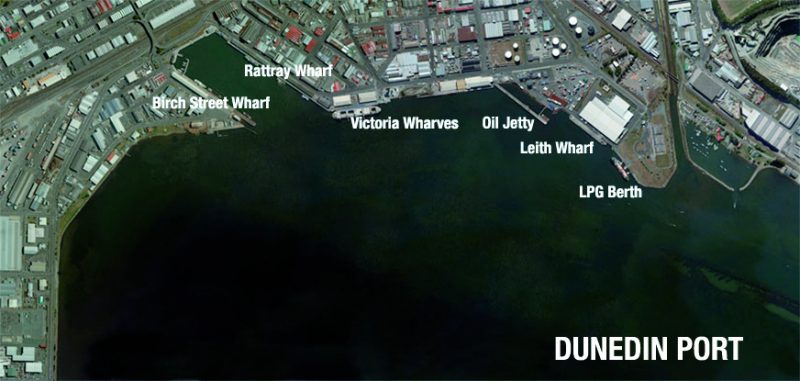
The dredged Victoria Channel outside the harbour at Port Chalmers up to Dunedin is narrow, and consequently the vast majority of port activity is centred around Port Chalmers rather than central Dunedin. The Otago peninsula offers a wide range of attractions including rare wildlife, historic buildings, woodland, gardens and coastal scenery. The forty mile round trip of the peninsula taking the ‘high’ Highcliffe Road over the top, and returning via the ‘low’ Portobello Road gives one a full day of magnificent sightseeing. Larnach Castle on the peninsula was built by the politician and businessman William J. M. Larnach as a grand stone mansion in the ‘Scottish Baronial’ style with a great many interior treasures e.g. elaborately carved and decorated ceilings and a large, hanging staircase created by English and Italian interior designers. The Royal Albatross Centre on the prominent Taiaroa Head was opened in 1989 and has observatories, galleries and information on these lone wandering birds of the seven oceans, together with a colony of Stewart Island shags visible from the observatory as well as penguins, fur seals and other maritime mammals.
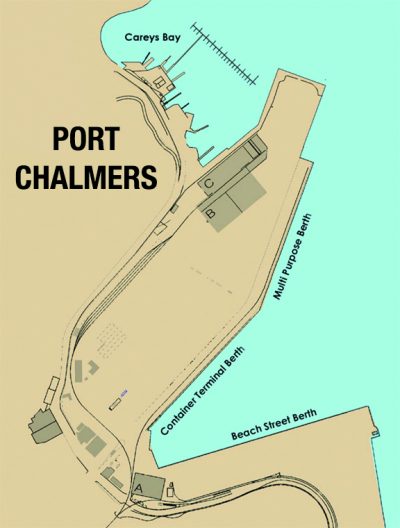
History Of Port Chalmers And Dunedin
Port Chalmers has a long history as a port town and today the relatively small population of working class and middle class residents are a mixture of Scottish and Maori descent. The Maori names for the area around Port Chalmers were Potakere and Koputai at the southern end of their Kai Tahu territory. The schooner Anne was under construction in 1840 in the area, but that year had seen the sale of the whole western shore of the Otago Harbour sold by the Maori leader Taiaroa to two French whalers, who were brothers in law and business partners.
In 1844, the sailing ship Deborah under Capt. Wing anchored in what today is Deborah Bay, where he was joined by Frederick Tuckett, who selected an adjoining block of land to be the Scottish New Edinburgh settlement of Dunedin. The sale was concluded to the Otago Association from the Maori people on 31st July 1844 at Port Chalmers. There were two small wharves in the port and the Port Chalmers Town Board was formed in 1846, with the first two sailing ships from Scotland, John Wickcliffe and Philip Laing, anchored at Port Chalmers in March and April 1848.
In 1860, tugs were towing lighters full of cargo up Otago Harbour to Dunedin from Port Chalmers, and the Otago Harbour Board was set up on 30th June 1874 at Dunedin, with a nine man committee including the Superintendent of the Board. As early as 1854, only six years after the foundation of the settlement of Dunedin, representations had been made to the Otago Provincial Council that it was desirable that all vessels entering Otago Harbour should be able to get as close as possible to Dunedin. There was no Harbour Master at Dunedin until December 1859, when Capt. Thomson was appointed to the post and commenced his duties on 16th January 1860. The first public meeting that was called to form an Otago Harbour Board occurred on 4th March 1873, with E. B. Cargill as Chairman, and an eight man committee was appointed to promote the formation of an Otago Harbour Board, which was given consent by the Governor of New Zealand fifteen months later.
The bucket dredger New Era had been purchased in 1866 and was employed for several years in cutting various channels up to Dunedin. Another dredger was obtained at a cost of nearly £20,000, but dredging operations failed to increase the draft significantly, and Dunedin had to be satisfied with the coming and going of small craft only. The proposal to construct the Victoria Channel was brought forward around the year 1877 to secure a depth of 16 feet at low water up to Dunedin. This channel was later deepened to a depth of 20y feet at low water and widened from 120 feet to 150 feet. This meant that on the incoming high tide of six feet in height, vessels drawing around 21 to 23 feet could reach Dunedin. The Otago Harbour Board took out loans of £687,000 between 1874 and 1885 to complete the dredging work. In 1874, the Rattray Street jetty at Dunedin was extended to 1,140 feet in length at a cost of over £12,500.
The harbour craft of the Otago Harbour Trust by 1893 included the tug Plucky and the more powerful Koputai. The twin screw tug Dunedin of 345 grt was built in 1914 by the local yard of Stevenson and Cook of Port Chalmers. The twin screw hopper dredger Otakou of 1,933 grt was completed in July 1929 by Fleming and Ferguson Ltd. of Paisley on the Clyde and made the long voyage out to South Island. The Otago Dry Dock at Port Chalmers had been completed by 1893 with a length of 328 feet, moulded width of 67 feet and a depth on the sill at ordinary tides of seventeen feet and at high spring tides of nineteen feet. The dock was later lengthened and was capable of taking vessels up to 530 feet in length. The maximum allowed draft for docking was nineteen feet, and the dock had a travelling crane of 15 tonnes capacity. A privately run ship repair yard adjoined this dry dock, with a workshop containing engineering tools and a steam hammer suitable for the heaviest type of work. The whale factory ship C. A. Larsen (ex San Gregorio) 13,246/13 built on the Tyne by Swan, Hunter and Wigham Richardson Ltd. for Eagle Oil and then sold to Hvalfanger A/S Rosshavet (Rasmussen and Konow) was the largest ship to be dry docked at Port Chalmers at 527.2 feet in length.
The Otago Harbour Board offices were completed in 1884 to a design by the architect Francis William Petre (1847-1948) at a cost of only £2,000, as the Victoria Channel had cost a fortune to develop and dredge. The two storey offices were plain with nine windows on one side of the corner site and five on the other side. The building was remodelled in 1936 and the entrances were repositioned. Francis William Petre was born in New Zealand and became famous for his designs for the Catholic Cathedrals of Dunedin and Christchurch, and the Dominican Priory in Dunedin. He worked his designs in both classical and gothic styles of architecture, but for the Otago Harbour Board offices he chose the ‘Italian Renaissance Revival’ style.
The great historic buildings of ‘New Edinburgh’ or Dunedin as it was called by its Scottish settlers are all located within a short walking distance of the city centre. The 1860s gold rush made Dunedin the biggest commercial capital centre in New Zealand. The beautiful parks, gardens and historic buildings are all on a flat central area, with views to the surrounding hills, from which splendid views are obtained of the city and harbour below. Dunedin Railway Station is one of the finest historic buildings in New Zealand and one of the best examples of railway architecture in the southern hemisphere. The grandeur of its ‘Flemish Renaissance’ style of architecture was designed by George Troup of New Zealand Railways and opened in 1906. The clock tower rises 120 feet above ground level and has finely carved sandstone lions to guard the cupola above. The station was built of beige Omaru limestone and Central Otago bluestone with finely polished Aberdeen granite on the exterior columns to give strength of construction.
Shipbuilding and ship repair facilities at Port Chalmers developed in the late 19th century, with the adjacent Carey’s Bay becoming an important fishing port. Port Chalmers began to completely assert itself as the main port of Otago Harbour over the claim of Dunedin by the start of the 20th century. In the first decade of the 20th century, the Otago Harbour Board made important additions to the Dunedin Wharves to improve its facilities, with twelve more large warehouses and greater depth of water alongside. There were eight steam cranes available at Dunedin for lifting cargo up to ten tonnes in weight.
A powerful dredger of 1,250 grt was at work deepening the Victoria Channel, and important work was being carried out at Taiaroa Head with the construction of a stone training wall above Harrington Point to improve the curved channel and give a better flow of water and a straighter course into Otago Harbour. Sir John Coode, an English civil engineer, had twenty years earlier recommended the construction of moles at the harbour entrance to prevent sandspits building up, with that projecting from the eastern peninsula side being 1,080 metres in length. The port and starboard lights along the edge of the channel in the harbour were improved with better and stronger types of light buoys. Taiaroa Head was protected by batteries of modern breech loading guns supplied by Sir William Armstrong at Elswick on the Tyne. They featured rifling of the inside of their barrels in order to spin the shells on their trajectory for very accurate fire, and were lowered into their casemates after firing so that they could not be seen from warships at sea. The Otago Harbour Board now had a large Board of fourteen members plus a Secretary and Treasurer, with Capt. D. McCallum as Harbour Master.

The confined Port Chalmers harbour had from its inception two long jetties protruding from the shore to increase the number of available berths so that around twenty ships could be accommodated when loading and discharging. These two interior jetties were removed in post World War II years as the size of ships handled grew ever larger. Port Chalmers remained at the forefront of the New Zealand export meat trade, with the cellular container ship Columbus New Zealand of 22,000 dwt owned by Hamburg Sud sailing on 28th June 1971 carrying the first container cargo of meat destined for the Eastern Seaboard of the United States of America. The trio of sisters Columbus New Zealand, Columbus America and Columbus Australia were regularly employed on a container service between the Eastern Seaboard of North America and Australia and New Zealand, and this trade increased enormously during the 1970s, and laid the foundations for the future development of the port. The first container to be handled for Japan Line at Port Chalmers occurred in 1977. The gantry cranes at Port Chalmers Container Terminal are now ZPMC type gantries of sixty tonnes capacity.
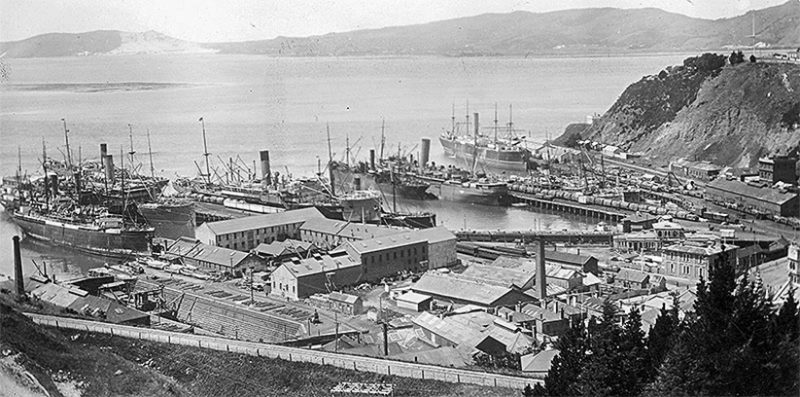
The Otago Harbour Board remained as the regulatory body for Otago Harbour until the Port Companies Act of 1988, which required publicly elected harbour boards to be converted into public bodies. Port Otago Ltd. was registered on 3rd October 1988, with all of the company’s shares being vested in the appropriate provincial representation body, in this case the Otago Regional Council (ORC). Port Otago Ltd. assumed the responsibilities of the Otago Harbour Board on 1st June 1989, and thus the operations of the two wharf systems at Port Chalmers and Dunedin. Port Chalmers is one of only two container ports in New Zealand with sufficient depth of water to handle the biggest container ships of the mega size. It is the primary export port for southern New Zealand, and is the third largest port in the country by value of traffic. It also handles around one hundred cruise ships per annum during the southern cruise season which lasts from October to April.
Otago Harbour Berth Facilities
PORT CHALMERS (METRES)
Berth |
Length |
Depth |
| Container Terminal | 300.0 | 13.9 |
| Multi-Purpose Berth | 297.0 | 14.0 |
| Beach Street Berth | 412.0 | 11.5 |
Cruise ships berth at either the Beach Street Berth or the upper inner berth of the Container Terminal. Rails of length 5,100 feet and roads swing around the rear of the Beach Street Berth to the rear of the Container Terminal and Multi-Purpose Berth in order to service warehouses ‘A’, ‘B’ and ‘C’ and the inter-modal facilities (road to rail). Immediately to the north eastern end of the berths are the marina and fishing berths of Carey’s Bay, with fish factory ships operating from Dunedin until as late as 1993.

DUNEDIN (METRES)
Berth |
Length |
Depth |
| Victoria Logging Wharves | 541.0 | 8.2 |
| Oil Jetty | 214.0 | 8.2 |
| Leith Wharf | 153.0 | 8.2 |
| LPG Wharf | 62.0 | 6.1 |
| Birch Street Wharf | 310.0 | 6.7 |
| Rattray Wharf | 397.0 | 4.2 |
| Ravensbourne Wharf | 149.0 | 8.2 |
The latter Ravensbourne Wharf is for the handling of fertilisers and is situated midway between Port Chalmers and Dunedin. The Dunedin swinging and basin depths are of 6.8 metres. The Victoria Channel between Port Chalmers and Dunedin is capable of handling ships up to 180.0 metres in length, 8.0 metres draft, and 32.2 metres in moulded beam. However, vessels with lengths in excess of 150.0 metres can only transit the Victoria Channel during daylight hours. The Dunedin Wharves are adjacent to the cold storage facilities of the meat, dairy, fishing and horticultural exports of the region. The Port Chalmers Container Terminal handles around 200,000 TEU per annum, with the main container lines calling being Australian National Line, (ANL), CMA CGM, Hamburg Sud, Maersk Line, MSC, PIL, and Safmarine as well as ships chartered to these lines.
PORT OTAGO TRAFFIC FIGURES (MTONNES) 2016/17
| Logging Exports | 0.957 |
| Fertilisers | 0.135 |
| Meat, Dairy, Fish, Apples | 0.308 |
| General Cargo | 0.102 |
| TOTAL | 1.502 |
The cruise ship calls for 2018/19 are very much up over the figures for 2017/18 at 89 calls, and for 2016/17 at 79 calls, showing a great increase of passengers wishing to see the beauty of Otago Harbour and its great surface area of 12,750 acres, and the soft rolling hills of the Otago Peninsula, as well as the charm of the Dunedin city centre attractions
Ships Calling At Port Chalmers
In 1865, Shaw, Savill of London were operating fifteen sailings per annum to New Zealand, with several for Port Chalmers. Albion Line owned by Patrick Henderson of Glasgow, later more famous in the Burma trade, began a working relationship with Shaw, Savill through the Park Brothers of Glasgow in 1862. The numbers of sailing ships despatched to New Zealand in 1866 had reached 68 owned and chartered ships by Shaw, Savill and eight owned and several more chartered ships by Albion Line.
By 1875, 140 ships cleared U.K. ports per annum for New Zealand, with 70 owned or chartered by Shaw, Savill, 45 by the New Zealand Shipping Company formed in 1873, and the remaining 25 by Albion Line. 91 of the 140 ships cleared northwards in ballast in search of cargoes of tea, wool, spices and silks, while the remaining 49 ships loaded homeward in New Zealand ports. There were always two sailing ships owned by Albion Line discharging or loading in Port Chalmers at any one time, with a total of two dozen sailing ships and small steamers crowding the confined harbour.
On 1st January 1873, the first railway line of 1.067 metre narrow gauge in New Zealand opened for business between Port Chalmers and Dunedin. It was subsequently incorporated into the national network through a connection to the Main South Line, which was opened through to Christchurch on 7th September 1878 and Invercargill on 22nd January 1879. The official opening of the dredged Victoria Channel in 1881 allowed deep sea vessels to pass up the harbour to Dunedin.
Talks regarding a merger between Shaw, Savill and the Albion Line during 1882 led to a successful conclusion and the formation of the now familiar Shaw, Savill and Albion Line on 1st January 1883. A fleet of 31 sailing ships was formed, with twelve from Albion Line and nineteen from Shaw, Savill. The sailing ship Dunedin of 1,320 grt came from Shaw, Savill and was chartered in 1882 to the New Zealand and Australia Land Company and fitted with a Bell-Coleman cold air refrigeration plant in the U.K. However, her first cargo of loaded frozen meat had to be sold locally in the Port Chalmers area because of an equipment failure that had followed boiler trouble. The second cargo of meat was delivered to London 85 days later in prime condition by Dunedin, which became famous for the first cargo of New Zealand lamb to reach the U.K.
Another famous Shaw, Savill & Albion Line sailing ship that was part of the merger in 1882 was Euterpe of 1,197 grt and built at Ramsey in the Isle of Man by Gibson in 1863. She is miraculously still afloat today as the oldest sailing merchant ship in the world as the Star of India in San Diego. She was completed for the Indian trade of Wakefield, Nash and Company of Liverpool, but was sold in 1871 to Shaw, Savill and traded for the next twenty five years carrying passengers and cargo to New Zealand ports, including Port Chalmers. She was sold in 1896 and renamed Star of India for the Alaskan trade, but was laid up in 1923, restored in 1962 and today is part of the San Diego waterfront scene.
Many photographs of these early sailing ships berthed at the two berths in Port Chalmers alongside a single warehouse exist today, including Lyttelton of 1,180 grt completed in 1882 by Robert Duncan for Albion Line. She was wrecked outside Timaru on 12th June 1886 while being towed out of the harbour by the steamer Grafton, which fouled her propeller on the towing rope. Both ships anchored but when the steamer took up the tow again Lyttelton was pulled over the fluke of her own anchor and she sank in twenty minutes. The wreck was in the shipping channel and was blasted away by the Torpedo Corps.
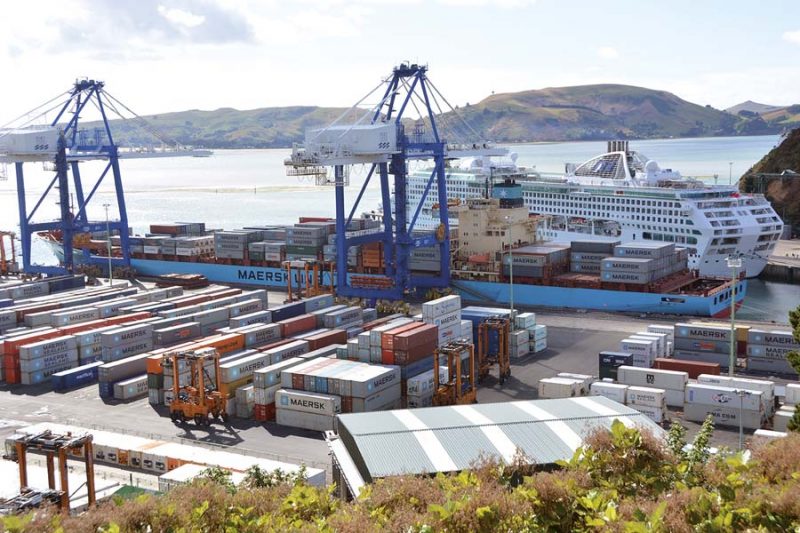
The Union Steamship Company of New Zealand had regular calls at the port for both coastal trades and passenger links to Australia and Pacific destinations. Warrimoo of 3,528 grt was completed by C.S. Swan and Hunter at Wallsend in 1892 and made the long voyage out to New Zealand for the Huddart owned company of the New Zealand and Australasian Steamship Company of Melbourne. She was used on the ‘All Red’ route across the Pacific to Honolulu and Vancouver, but severe competition with the Union Steamship Company led to the cessation of this route in 1898, and Warrimoo, Aorangi, and Miowera/Maitai passed via creditors to the tentacles of the Union Steamship Company in April 1901. Warrimoo frequently berthed at Dunedin and after trooping service during 1914/16, she was sold at the end of 1916 and entered service for Tan Kah Kee of Singapore on 29th January 1917. She was unfortunately in collision on 18th May 1918 with her convoy destroyer escort off Bone while on a voyage from Singapore to Bizerta and Marseille, with the depth charges of her escort exploding and sinking Warrimoo off Galita Island in Tunisia, with the loss of one life.
Tramps and cargo-liners were often seen on the approach to Port Chalmers and Dunedin, particularly those of Port Line and Shaw, Savill and Albion Ltd., including Port Chalmers 8,717/33 of 662,690 cubic feet hold space and the sisters Waiwera, Waipawa and Wairangi 12,435/35 with six cavernous holds of 803,500 cubic feet capacity of which 558,000 cubic feet was refrigerated. I have several photographs of ships in transit on Otago Harbour that show the great beauty of the area, including Empire Star 11,861/46 of Blue Star, completed as Empire Mercia to a Shaw, Savill and Albion Ltd. design with passenger accommodation for 132 persons. She was the first ship to berth on 13th May 1969 at the new Beach Street Wharf. She arrived two years later on 16th October 1971 at Kaohsiung for breaking up.
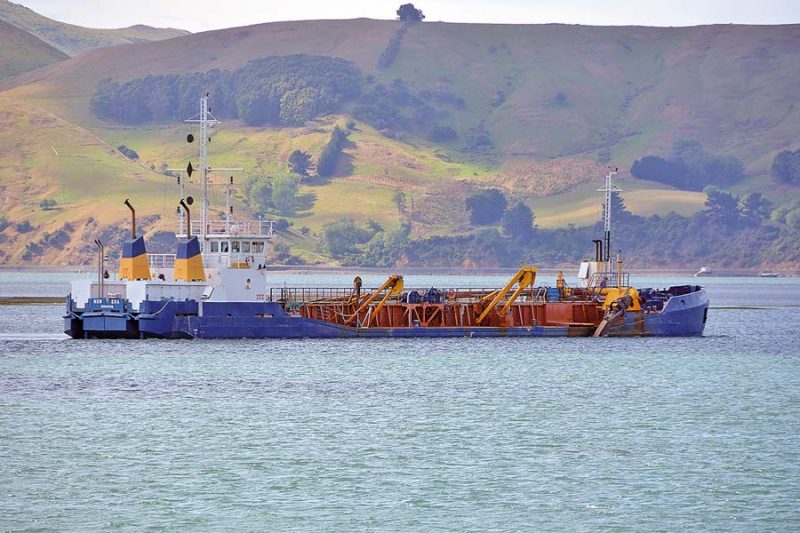
Five British liner companies formed Associated Container Transportation (Australia) Ltd. in 1965 with ships named ACT1, ACT2 etc, and four British liner companies formed Overseas Containers Ltd. (OCL) in 1967 with ships named with ‘Bay’ suffixes. Many of these Australian and New Zealand trade container ships arrived in Otago Harbour and Port Chalmers to load containers of meat, fish and dairy produce. The Tyne built large cellular container ship Remuera was completed in 1973 with a capacity for 1,813 TEU of containers of which 1,151 TEU were reefer boxes, and was thus ideal for the Otago trade of refrigerated cargo. She continued running to Port Chalmers as Remuera Bay for OCL and Berlin Express for Hapag Lloyd until broken up in China in June 2002.
The Shipping Corporation of New Zealand was formed in 1974 to be the State owned shipowner for the containerised shipping routes to Western Europe, Singapore, Japan, Korea, Caribbean, U.S. Gulf and Pacific West Coast Canada and United States of America routes. The big container ships New Zealand Pacific 42,276/78 and New Zealand Caribbean 19,613/80 had red hulls and funnels with a central blue band fringed by two thin white bands.
The Tyne built container ship Dunedin 18,140/80 was completed by the Walker Naval Yard for Shaw, Savill and Albion Ltd., and was a worthy successor to her namesake of a century earlier with refrigerated cargo. She ran from Port Chalmers and Lyttelton to American Gulf and Eastern Seaboard ports. N.Z. Orient Line, half owned by Ahrenkiel of Germany, had four ships operating from Port Chalmers and other New Zealand and Australian ports to South East Asian ports. Bulk carriers carrying fertilisers, and forestry carriers and loggers are frequently seen in both Port Chalmers and Dunedin harbours, with particularly those of the Pacific Basin Agencies of Hong Kong on charter to shippers in the ports of South Island.
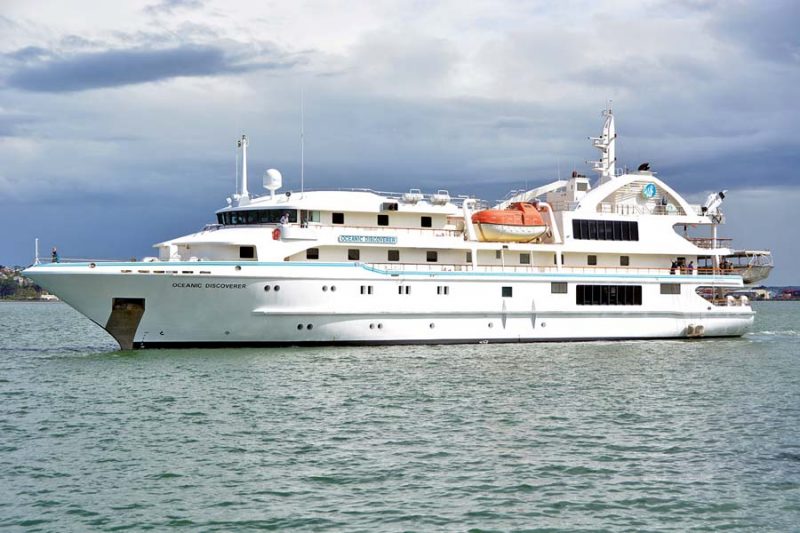
Port Chalmers is one of the four big ports in New Zealand, the others being Auckland, Wellington and Lyttelton. The average size of sheep farms in Otago Province is 1,800 head of sheep, greater than the nationwide average of its 22,400 sheep farms. In 1965, meat, wool and dairy produce represented 84% of New Zealand exports, but had fallen to 55% by 1981. During the same period, the market for New Zealand meat, wool and dairy produce became worldwide, with European demand falling from 67% to 30%, and the United States of America, Canada and Japan taking over the majority of exports. New Zealand is still the world’s leading exporter of beef, mutton and lamb, and this drives the big demand for reefers and reefer container ships in Port Chalmers.
Postscript
The main future development of Port Chalmers is an extension of 135.0 metres to the Multi-Purpose Wharf costing $NZ21.0 million, which began in late 2017. Further deepening of the approach channel to Port Chalmers to fourteen metres, with consents granted for a 25 year dredging programme, will see increased size of forestry, logging and bulk carriers handled at the port. The new cruise ship passenger facility at Port Chalmers has been welcomed by all users, as a user friendly, splendid way to begin their journey to Dunedin and the local tourist activities. In line with these increases in ship calls and size, the tug Arihi and barge Hapuka were purchased by Port Otago Ltd. for $NZ8.2 million in 2016 to increase the port tug fleet. The pilot launch meeting incoming ships at Taiaroa Head is named Aramoana.
Toitu Otago Settlers Museum is housed in a futuristic building in Dunedin in Queen’s Gardens. It is the oldest social history museum in New Zealand and shows the lives of the province’s settlers from the Southern Maoris to the Scottish settlers and the Chinese gold miners. The displays include early road vehicles and two large steam locomotives, one dating from the early 1870s. The University of Otago was founded in 1869, with the first four professors living in university houses shortly afterwards, and is the oldest university in New Zealand. It plays a crucial role in the life of the city, with its bluestone clock tower telling the time for all the city residents.
The beauty of the Otago Harbour and its surroundings is without equal in South Island, and one can see it all from the comfort of a carriage of the Taieri Gorge Railway. This runs along the coast of Otago Harbour after leaving Dunedin Railway Station on a 48 mile four hour run west of the city. This is one of the world’s greatest train rides, the railway dates from 1879 and then heads from the coast through a steep sided river gorge to the arid grasslands and rock outcrops of Strath Taieri, named by Scottish settlers. Many bridges and viaducts are crossed up to 155 feet in height in order to cross and recross the Taieri river. The Scottish settlers of Dunedin certainly knew what they were doing with their elegant Victorian and Edwardian architecture, even naming their city after the Gaelic for Edinburgh, Dun Eideann or Dunedin, ‘Dun’ meaning ‘Fort’.

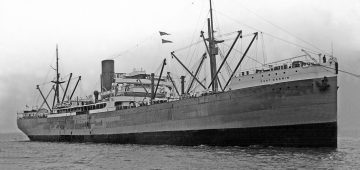



Comments
Sorry, comments are closed for this item